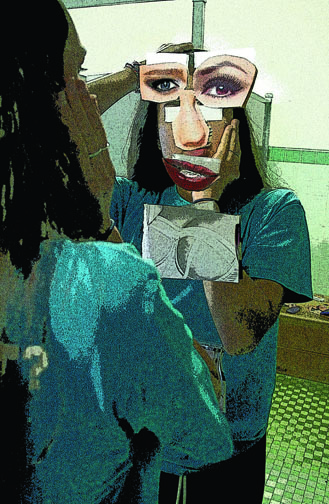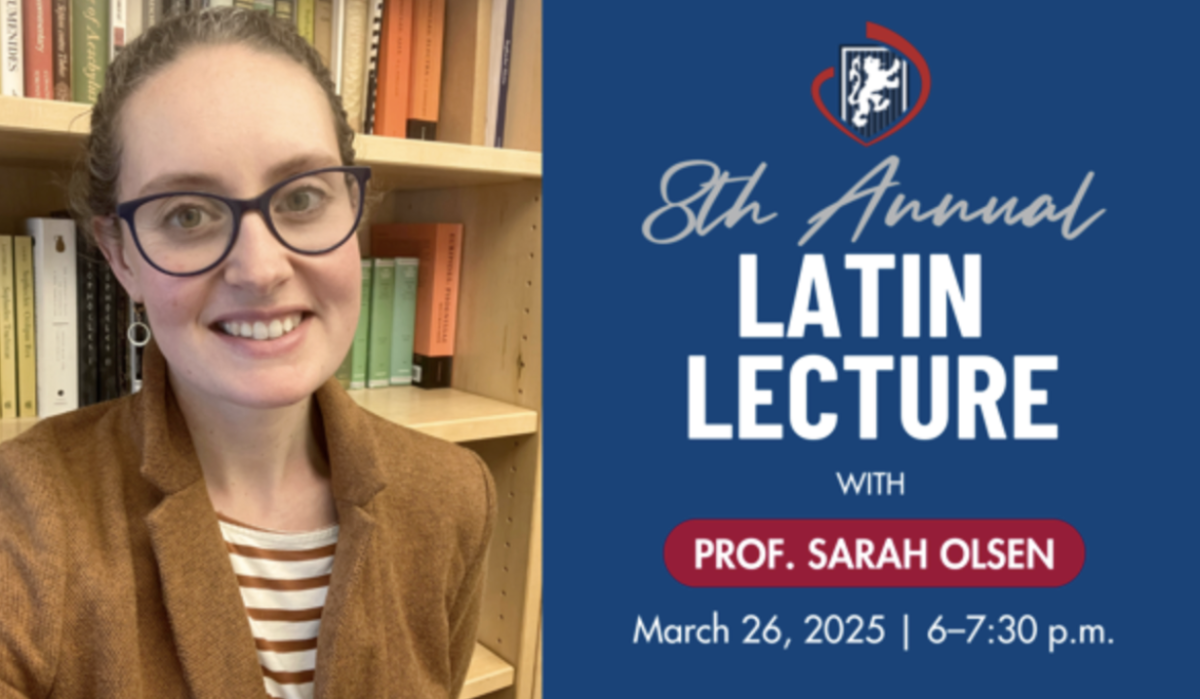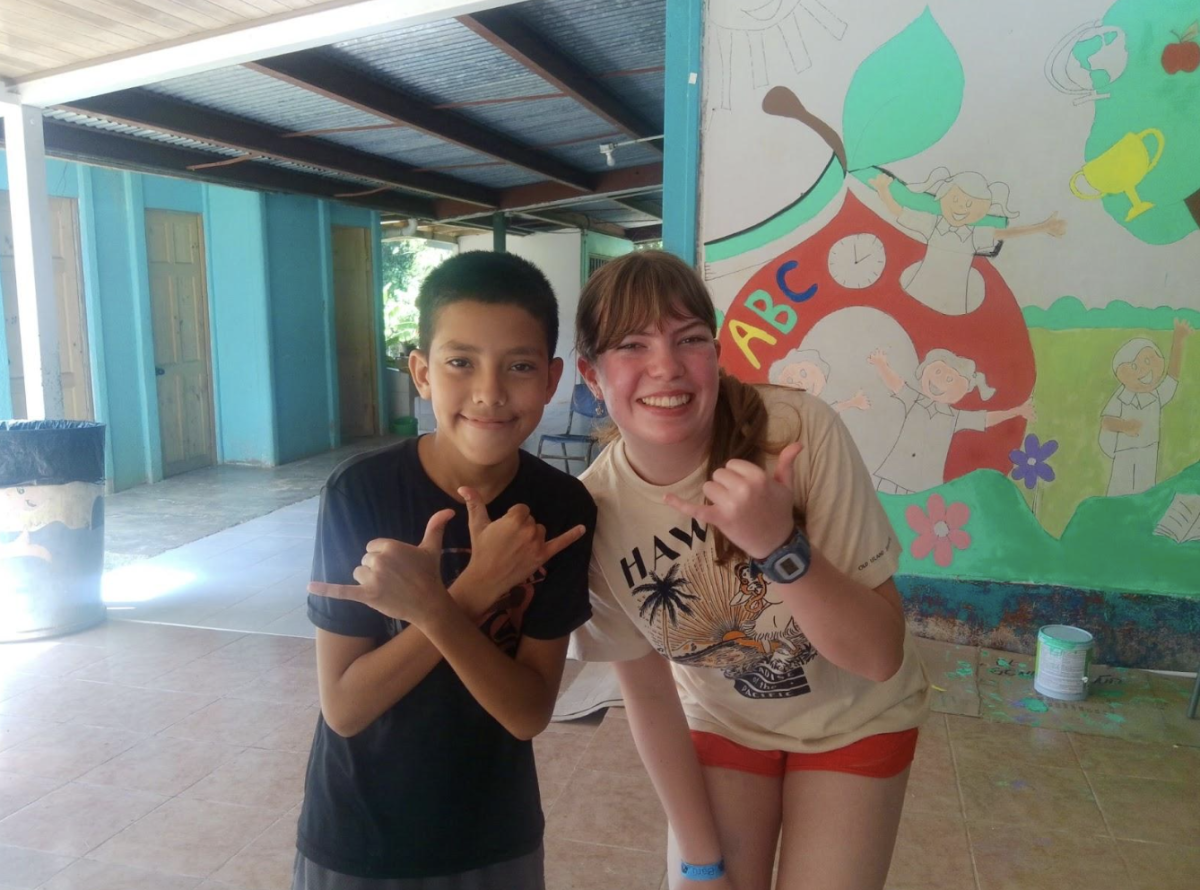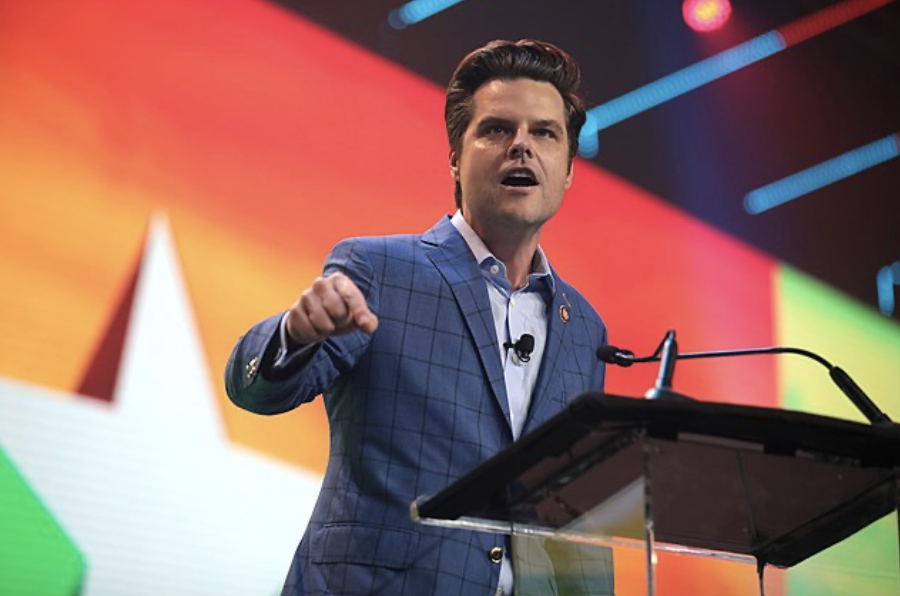Today’s teenage makeover goes beyond the traditional haircut or stylish new boots. The number of teenagers undergoing plastic surgery each year is on the rise as medical procedures that were once considered taboo become more accessible and acceptable, mirroring the increase of shows focused on plastic surgery such as “Nip/Tuck” and “Dr. 90210” along with the prevalence of cosmetic surgery in the media.
MELISSA
Melissa returned to school after Christmas break not just sporting a new outfit, but a new body. As she strolled through the locker room to greet her friends, most of her classmates did not notice any distinguishable difference. But underneath her school sweater, her breasts were bound tightly in bandages, still sore from her recent breast reduction.
While plastic surgery in high school may seem unusual, Melissa, who asked her name be changed, is one of thousands of teens going under the knife. According to the American Society of Plastic Surgeons (ASPS), over 200,000 cosmetic plastic surgery procedures were performed on teenagers in 2009 alone.
“Since I was really young I had to continually bring it up with my pediatrician until she sent a report asking if there were plastic surgeons who would be willing to work with a really young patient because you’re not supposed to be younger than 18,” Melissa said. “But the surgery would improve my quality of life, so doctors were more willing to consider it.”
By eighth grade, Melissa’s 32G breasts were a cause for self-consciousness far beyond normal teenage insecurity. She could not play sports, she had constant back and shoulder pain and received unwanted attention just from walking down the street.
“It was emotionally distressing and socially uncomfortable because I felt like I was getting a lot of negative attention, from guys in particular, and even girls would make catty comments,” Melissa said.
Melissa decided to go through with the procedure after consulting three different plastic surgeons and choosing one whose operating technique suited her needs. She asked nurses for background on each doctor and learned that certain surgeons tend to keep their patients’ breasts on the larger side out of safety concerns rather than reducing them as small as Melissa wanted. She also consulted with a friend who underwent the same operation.
“She showed me her scars and talked to me about the healing process,” Melissa said. “I knew what to expect because she had gotten the surgery done when she was really young as well and she is petite like me.”
Melissa’s surgery was successful, reducing her to a 32D. The operation was three hours and she was released from the hospital an hour later. While only bed-stricken for three days, recovery lasted much longer.
“It was uncomfortable because my chest was bound so tight that I couldn’t really move and I had tubes draining the liquid from where the surgery was for about five days,” Melissa said. “By the end of the week, I was able to walk around but not completely healed.”
Melissa could not sleep on her side, exercise, carry a backpack, or even give hugs for about a month. She also had to wear a sports bra for about two months and apply scar medicine twice a day for a year. As her recovery progressed, friends started to notice and even asked about the change.
“I told all of my friends because it wasn’t something that I was ashamed of by any means,” Melissa said. “It’s not like I wanted everyone to know about it but it was noticeable so people asked me about it after and I told them the truth.”
The success and subsequent self-confidence Melissa said she gained from the surgery has changed her opinion on possible future operations.
“It was life changing in the best way possible,” Melissa said. “I don’t see a problem with something similar later in my life, even for cosmetic purposes.”
RACHEL
Many teenagers agree with Melissa’s outlook even though they have not had any plastic surgery — yet. Senior Sima Daniel says she has considered getting a nose job — in medical jargon, a rhinoplasty.
“I’ve always wanted to because I hate my nose,” Daniel said. “I feel like it’s very big. I’m pretty comfortable in my own body but if I could make it a little better I would.”
Rhinoplasty accounted for almost half of all cosmetic surgical procedures performed on teenagers in 2009 — nearly 35,000 operations, according to ASPS. One of the most prominent features on the face, noses are often the subject of much teenage body image anxiety — like for Rachel, who asked her name be changed.
“I really had a complex about my nose and it was hard for me to even have conversations with people without thinking if they were noticing how big it was,” Rachel said. “It seems silly, but it was a huge topic of discomfort for me. I wanted to get it done for myself, not for anyone else.”
From a young age, Rachel said her nose was the subject of much teasing from other kids, but she did not seriously start looking into plastic surgery until seven months before the procedure, when she began searching for doctors. Doctors usually will not perform the surgery until girls are about 15 or 16, when the nose reaches its adult size.
“My parents were supportive, because they knew how much it tormented me, and some of my non-immediate family members have had the same procedure and could not be happier,” Rachel said.
While uncomfortable, the operation was much less painful than Rachel expected. She had to wear a cast for a week, take pain medication and her nose remained severely swollen for about two weeks.
“It was definitely worth it,” Rachel said. “I didn’t make a big change on purpose, but the things that were really bothersome to me were the things I changed.”
Like Melissa, Rachel only told her closest friends and family, but was open with anyone who asked her about the operation. However, unlike Melissa, Rachel does not plan to get any more plastic surgery in the future.
“I don’t think it should be taken lightly,” Rachel said. “It’s sad to see what people do when they take it to extremes, but it would be hypocritical of me to judge them because they are trying to feel more confident just like I was.”
Plastic surgeons recognize the body confidence issues teenagers face, but usually hesitate to perform cosmetic surgery on minors.
“I believe that an individual should be an adult and make that decision,” Dr. Shahin Javaheri, a plastic surgeon at the Maas Clinic, said. “A young person, frequently, does not have enough experience in life to confront self-esteem issues — therefore, cosmetic surgery may seem to be an easy way to deal with them. What young people need to understand is that surgical procedures are permanent and leave scars, and possible complications may occur which a young person may not be able to confront.”
CHELSEA
Javaheri has performed surgical procedures on minors, but only for congenital abnormalities. Chelsea, who asked her name be changed, plans to undergo plastic surgery next month in order to correct breast asymmetry.
“I am disproportionate, so my breasts are different cup sizes — one is a C and one is a D,” Chelsea said. “In the procedure, the doctor will reduce the size of both my breasts to a B-cup to make sure that they are even.”
While most plastic surgeons are reluctant to operate on teenagers for cosmetic purposes, corrective surgery like Chelsea’s is most beneficial at a young age, as it lessens pain and speeds healing time. Chelsea shares Javaheri’s view that adolescence is not the time for unnecessary surgery.
“I am totally against surgeries of cosmetic nature at this age, but I think corrective surgery is fine, especially when you know that you are done growing,” said. “But I would never get plastic again in the future. This is definitely time thing for me.”
Chelsea says she hopes this surgery increase her self-confidence and find shirts and bras that actually of wearing baggy sweaters to hide difference.
NOT A QUICK FIX
While rhinoplasty is the most choice for teenagers, breast reduction corrective breast surgery are popular well, along with a number of other options, some cosmetic and some Otoplasty pins back protruding severe acne can be treated with microdermabrasion, laser skin-resurfacing and peels. Breast enhancements are among older teenagers due restriction on silicone implants, limiting availability to those over 18.
One procedure growing in among teenagers may be surprising Usually associated with older attempting to get rid of wrinkles, are using Botox to perfect anything too-gummy smile to a too-square to the ASPS, last year injected into American teenagers 12,000 times.
Although teenagers are using as a cosmetic procedure, Botox purposes as well. It can be used neuromuscular and eye disorders, eyelid twitching and crossed eyes older patients with involuntary contraction of neck muscles or excessive sweating.
Complications can occur in of operation though, and Botox is A surgery gone wrong can cause nerve paralysis and weakened while using Botox to treat a “gummy” can result in speech impairment or smile.
Extreme side effects like this outcome for any surgery. The which has no formal position surgery, cautions that teenagers and growing,” Chelsea plastic surgery definitely a one-surgery will and help her actually fit, instead hide the size FIX most popular reduction and popular as other surgical some corrective. protruding ears, and microderm-and chemical only com-due to the age limiting the in popularity surprising — Bo-older clients wrinkles, teenagers anything from a square jaw. Ac-Botox was teenagers nearly using it primar-Botox has medi-used to treat disorders, prevent eyes and help contraction sweating. in any type is no excep-cause facial weakened chewing, gummy” smile or an asym-this are a pos-The ASPS, on plastic and parents remember that every surgery has its risks. It recommends that teenagers demonstrate emotional maturity as well as an understand-ing of the limitations of plastic surgery. The ASPS has safety concerns too, urging teenagers to consider three important factors: certification, accreditation and in-formed consent. A plastic surgeon must be certified by the American Board of Plastic Surgery, the facility must meet proper ac-creditation standards by a national or state recognized accrediting organization, and informed consent involves both the patient and parents understanding the details and possible ramifications of the surgery. “My recommendation is that any individual who is considering cosmetic surgery must do a thorough research about the procedure, obtain consultation with people who have had prior experience, and seek a consultation with a Board certified plastic surgeon, preferably more than one,” Javaheri said. Despite the daunting health concerns and safety warnings, some teenagers are still eager to go under the knife. Although it could be easy to dismiss their motivations as pure vanity, Melissa, Rachel, and Chelsea all claim their reasoning stems from the same root — insecurity. Self-esteem issues among teenagers are nothing new, but the chance to correct a lifelong anxiety is an opportunity some want to seize as soon as possible. As plastic surgery becomes more popular at a younger age, plastic surgeons continue to debate whether it is appropri-ate to operate on minors, especially for cosmetic purposes. A Kaiser-Permanente plastic surgeon declined to comment for this story because she said she did not want to encourage teenagers pursuing surgical makeovers. Whether doctors say it is ap-propriate or not, most encourage teenagers to be informed about their decision. Plastic surgery is not a trend that can be discarded next season, it is a lifelong choice that must be faced in the mirror every day.Sa
Sara Kloepfer & Zoë Newcomb
Today’s teenage makeover goes beyond the traditional haircut or stylish new boots. The number of teenagers undergoing plastic surgery each year is on the rise as medical procedures that were once considered taboo become more accessible and acceptable, mirroring the increase of shows focused on plastic surgery such as “Nip/Tuck” and “Dr. 90210” along with the prevalence of cosmetic surgery in the media.
MELISSA
Melissa returned to school after Christmas break not just sporting a new outfit, but a new body. As she strolled through the locker room to greet her friends, most of her classmates did not notice any distinguishable difference. But underneath her school sweater, her breasts were bound tightly in bandages, still sore from her recent breast reduction.
While plastic surgery in high school may seem unusual, Melissa, who asked her name be changed, is one of thousands of teens going under the knife. According to the American Society of Plastic Surgeons (ASPS), over 200,000 cosmetic plastic surgery procedures were performed on teenagers in 2009 alone.
“Since I was really young I had to continually bring it up with my pediatrician until she sent a report asking if there were plastic surgeons who would be willing to work with a really young patient because you’re not supposed to be younger than 18,” Melissa said. “But the surgery would improve my quality of life, so doctors were more willing to consider it.”
By eighth grade, Melissa’s 32G breasts were a cause for self-consciousness far beyond normal teenage insecurity. She could not play sports, she had constant back and shoulder pain and received unwanted attention just from walking down the street.
“It was emotionally distressing and socially uncomfortable because I felt like I was getting a lot of negative attention, from guys in particular, and even girls would make catty comments,” Melissa said.
Melissa decided to go through with the procedure after consulting three different plastic surgeons and choosing one whose operating technique suited her needs. She asked nurses for background on each doctor and learned that certain surgeons tend to keep their patients’ breasts on the larger side out of safety concerns rather than reducing them as small as Melissa wanted. She also consulted with a friend who underwent the same operation.
“She showed me her scars and talked to me about the healing process,” Melissa said. “I knew what to expect because she had gotten the surgery done when she was really young as well and she is petite like me.”
Melissa’s surgery was successful, reducing her to a 32D. The operation was three hours and she was released from the hospital an hour later. While only bed-stricken for three days, recovery lasted much longer.
“It was uncomfortable because my chest was bound so tight that I couldn’t really move and I had tubes draining the liquid from where the surgery was for about five days,” Melissa said. “By the end of the week, I was able to walk around but not completely healed.”
Melissa could not sleep on her side, exercise, carry a backpack, or even give hugs for about a month. She also had to wear a sports bra for about two months and apply scar medicine twice a day for a year. As her recovery progressed, friends started to notice and even asked about the change.
“I told all of my friends because it wasn’t something that I was ashamed of by any means,” Melissa said. “It’s not like I wanted everyone to know about it but it was noticeable so people asked me about it after and I told them the truth.”
The success and subsequent self-confidence Melissa said she gained from the surgery has changed her opinion on possible future operations.
“It was life changing in the best way possible,” Melissa said. “I don’t see a problem with something similar later in my life, even for cosmetic purposes.”
RACHEL
Many teenagers agree with Melissa’s outlook even though they have not had any plastic surgery — yet. Senior Sima Daniel says she has considered getting a nose job — in medical jargon, a rhinoplasty.
“I’ve always wanted to because I hate my nose,” Daniel said. “I feel like it’s very big. I’m pretty comfortable in my own body but if I could make it a little better I would.”
Rhinoplasty accounted for almost half of all cosmetic surgical procedures performed on teenagers in 2009 — nearly 35,000 operations, according to ASPS. One of the most prominent features on the face, noses are often the subject of much teenage body image anxiety — like for Rachel, who asked her name be changed.
“I really had a complex about my nose and it was hard for me to even have conversations with people without thinking if they were noticing how big it was,” Rachel said. “It seems silly, but it was a huge topic of discomfort for me. I wanted to get it done for myself, not for anyone else.”
From a young age, Rachel said her nose was the subject of much teasing from other kids, but she did not seriously start looking into plastic surgery until seven months before the procedure, when she began searching for doctors. Doctors usually will not perform the surgery until girls are about 15 or 16, when the nose reaches its adult size.
“My parents were supportive, because they knew how much it tormented me, and some of my non-immediate family members have had the same procedure and could not be happier,” Rachel said.
While uncomfortable, the operation was much less painful than Rachel expected. She had to wear a cast for a week, take pain medication and her nose remained severely swollen for about two weeks.
“It was definitely worth it,” Rachel said. “I didn’t make a big change on purpose, but the things that were really bothersome to me were the things I changed.”
Like Melissa, Rachel only told her closest friends and family, but was open with anyone who asked her about the operation. However, unlike Melissa, Rachel does not plan to get any more plastic surgery in the future.
“I don’t think it should be taken lightly,” Rachel said. “It’s sad to see what people do when they take it to extremes, but it would be hypocritical of me to judge them because they are trying to feel more confident just like I was.”
Plastic surgeons recognize the body confidence issues teenagers face, but usually hesitate to perform cosmetic surgery on minors.
“I believe that an individual should be an adult and make that decision,” Dr. Shahin Javaheri, a plastic surgeon at the Maas Clinic, said. “A young person, frequently, does not have enough experience in life to confront self-esteem issues — therefore, cosmetic surgery may seem to be an easy way to deal with them. What young people need to understand is that surgical procedures are permanent and leave scars, and possible complications may occur which a young person may not be able to confront.”
CHELSEA
Javaheri has performed surgical procedures on minors, but only for congenital abnormalities. Chelsea, who asked her name be changed, plans to undergo plastic surgery next month in order to correct breast asymmetry.
“I am disproportionate, so my breasts are different cup sizes — one is a C and one is a D,” Chelsea said. “In the procedure, the doctor will reduce the size of both my breasts to a B-cup to make sure that they are even.”
While most plastic surgeons are reluctant to operate on teenagers for cosmetic purposes, corrective surgery like Chelsea’s is most beneficial at a young age, as it lessens pain and speeds healing time. Chelsea shares Javaheri’s view that adolescence is not the time for unnecessary surgery.
“I am totally against surgeries of cosmetic nature at this age, but I think corrective surgery is fine, especially when you know that you are done growing,” said. “But I would never get plastic again in the future. This is definitely time thing for me.”
Chelsea says she hopes this surgery increase her self-confidence and find shirts and bras that actually of wearing baggy sweaters to hide difference.
NOT A QUICK FIX
While rhinoplasty is the most choice for teenagers, breast reduction corrective breast surgery are popular well, along with a number of other options, some cosmetic and some Otoplasty pins back protruding severe acne can be treated with microdermabrasion, laser skin-resurfacing and peels. Breast enhancements are among older teenagers due restriction on silicone implants, limiting availability to those over 18.
One procedure growing in among teenagers may be surprising Usually associated with older attempting to get rid of wrinkles, are using Botox to perfect anything too-gummy smile to a too-square to the ASPS, last year injected into American teenagers 12,000 times.
Although teenagers are using as a cosmetic procedure, Botox purposes as well. It can be used neuromuscular and eye disorders, eyelid twitching and crossed eyes older patients with involuntary contraction of neck muscles or excessive sweating.
Complications can occur in of operation though, and Botox is A surgery gone wrong can cause nerve paralysis and weakened while using Botox to treat a “gummy” can result in speech impairment or smile.
Extreme side effects like this outcome for any surgery. The which has no formal position surgery, cautions that teenagers and growing,” Chelsea plastic surgery definitely a one-surgery will and help her actually fit, instead hide the size FIX most popular reduction and popular as other surgical some corrective. protruding ears, and microderm-and chemical only com-due to the age limiting the in popularity surprising — Bo-older clients wrinkles, teenagers anything from a square jaw. Ac-Botox was teenagers nearly using it primar-Botox has medi-used to treat disorders, prevent eyes and help contraction sweating. in any type is no excep-cause facial weakened chewing, gummy” smile or an asym-this are a pos-The ASPS, on plastic and parents remember that every surgery has its risks. It recommends that teenagers demonstrate emotional maturity as well as an understand-ing of the limitations of plastic surgery. The ASPS has safety concerns too, urging teenagers to consider three important factors: certification, accreditation and in-formed consent. A plastic surgeon must be certified by the American Board of Plastic Surgery, the facility must meet proper ac-creditation standards by a national or state recognized accrediting organization, and informed consent involves both the patient and parents understanding the details and possible ramifications of the surgery. “My recommendation is that any individual who is considering cosmetic surgery must do a thorough research about the procedure, obtain consultation with people who have had prior experience, and seek a consultation with a Board certified plastic surgeon, preferably more than one,” Javaheri said. Despite the daunting health concerns and safety warnings, some teenagers are still eager to go under the knife. Although it could be easy to dismiss their motivations as pure vanity, Melissa, Rachel, and Chelsea all claim their reasoning stems from the same root — insecurity. Self-esteem issues among teenagers are nothing new, but the chance to correct a lifelong anxiety is an opportunity some want to seize as soon as possible. As plastic surgery becomes more popular at a younger age, plastic surgeons continue to debate whether it is appropri-ate to operate on minors, especially for cosmetic purposes. A Kaiser-Permanente plastic surgeon declined to comment for this story because she said she did not want to encourage teenagers pursuing surgical makeovers. Whether doctors say it is ap-propriate or not, most encourage teenagers to be informed about their decision. Plastic surgery is not a trend that can be discarded next season, it is a lifelong choice that must be faced in the mirror every day.









